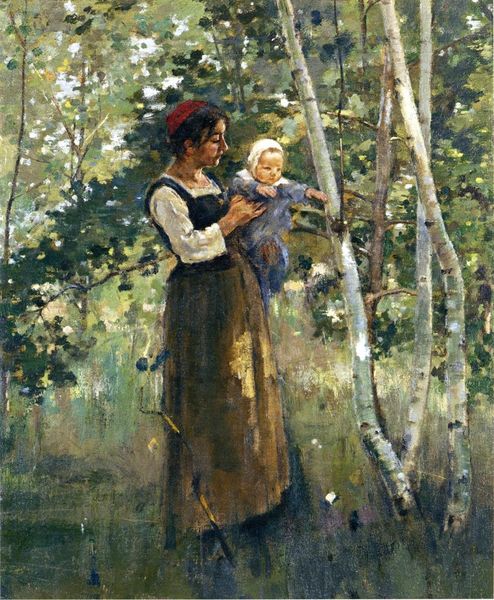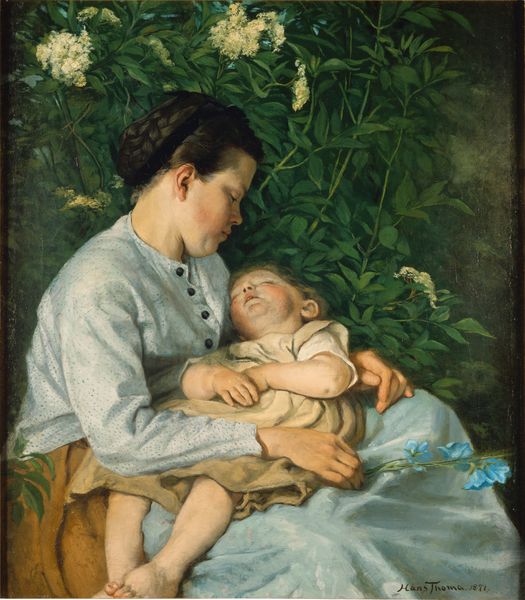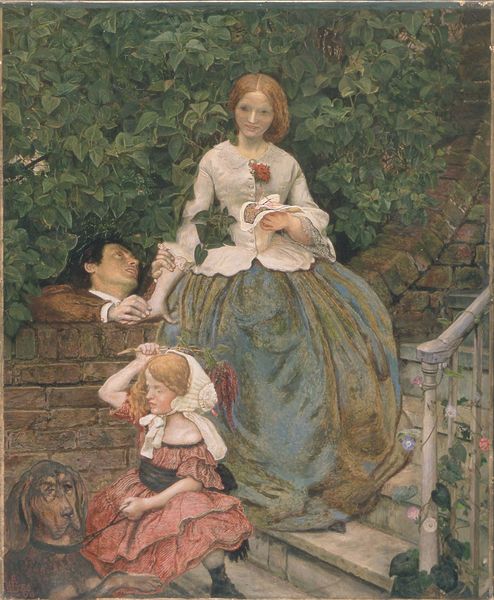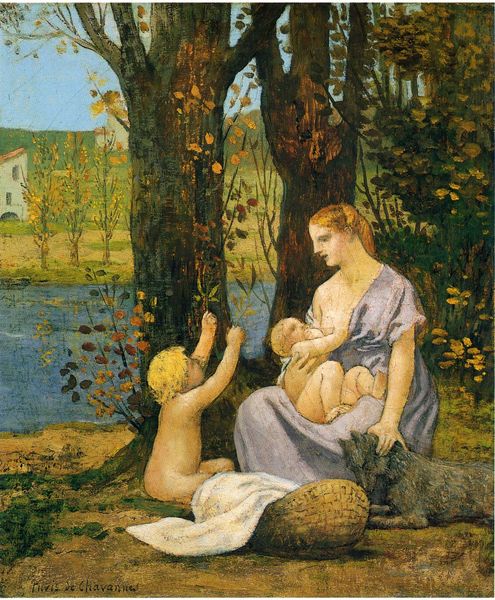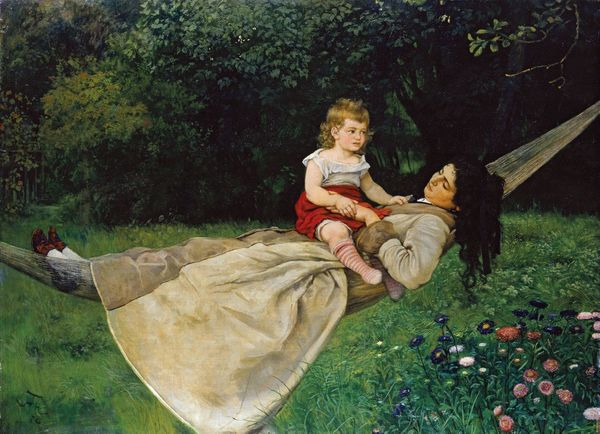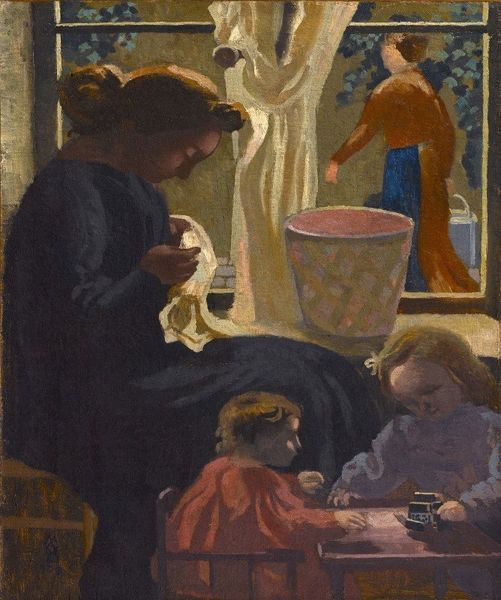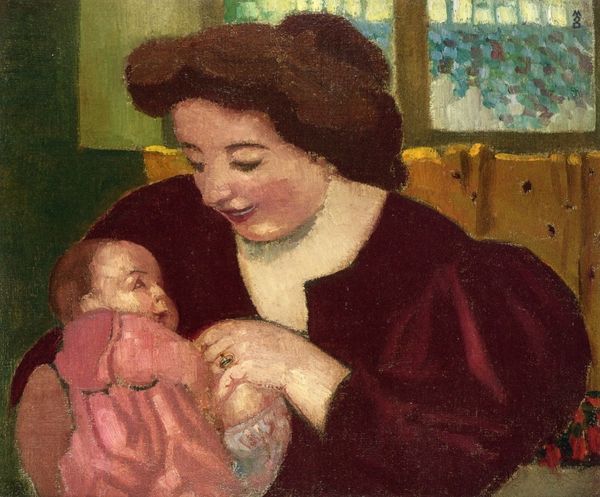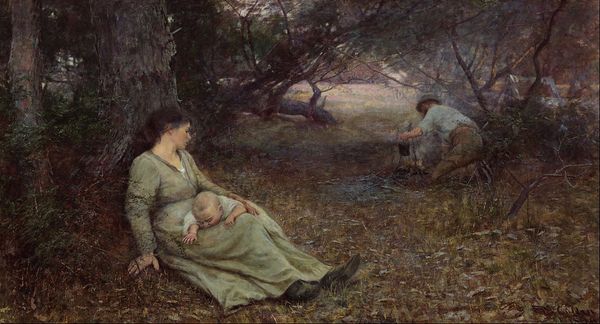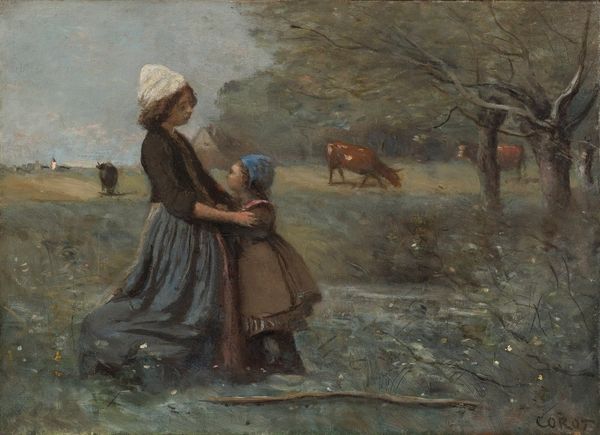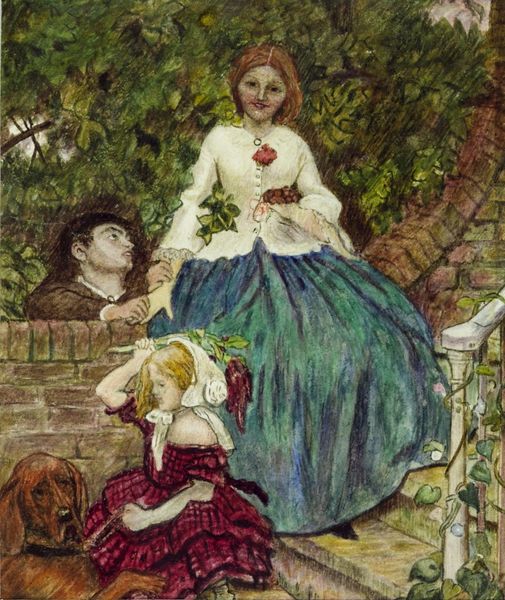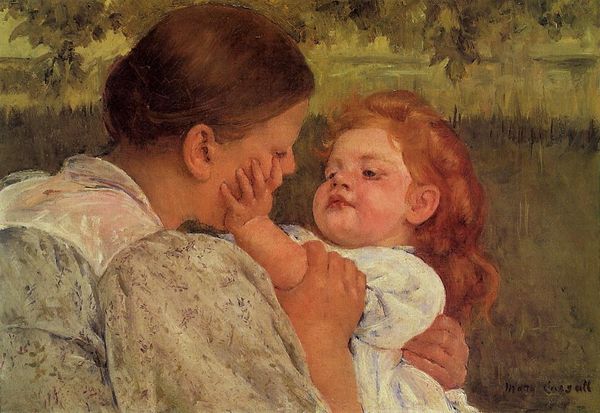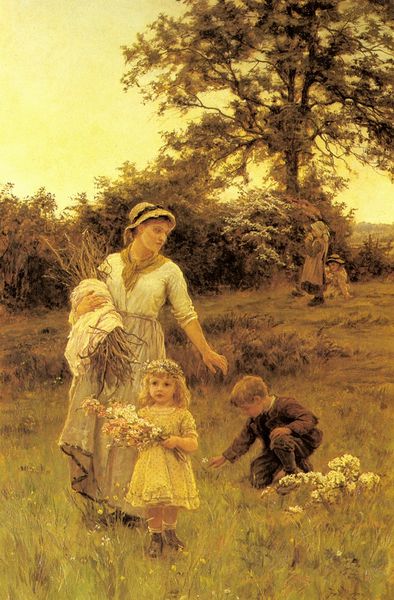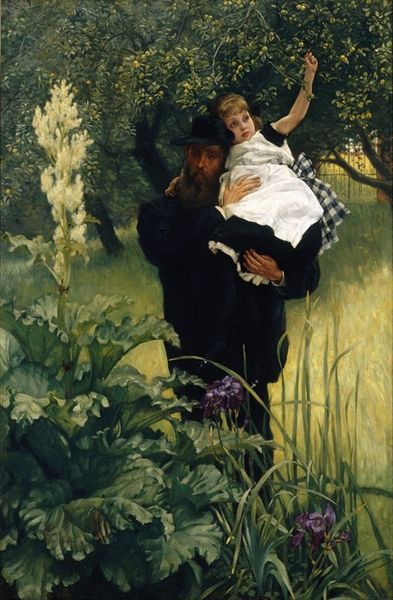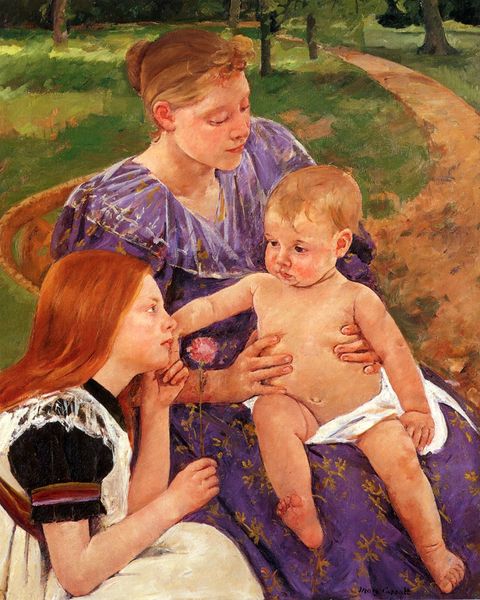
painting, oil-paint
#
portrait
#
painting
#
impressionism
#
oil-paint
#
landscape
#
oil painting
#
group-portraits
#
post-impressionism
Copyright: Public domain
Curator: This oil painting, attributed to Pekka Halonen, goes by the Finnish name "Tuonen Lehto," evoking a sense of place, specifically a "Grove of the Dead" or "Tuoni Grove." Editor: It certainly has a melancholic feel to it. The composition, especially the contrast between the dark water and the lighter figures, gives me an unsettling vibe. Curator: Given that evocative title, it’s reasonable to expect those themes to pervade. One of the aspects I find intriguing is how Halonen uses the materiality of the paint itself to describe not just the landscape but the experience of family life set against a mythic landscape. The way he layers the greens and blues speaks volumes about the materials available to him. Editor: Yes, the textured brushwork really catches the light. See how the paint application itself seems to build forms organically, creating depth in what could have been a rather flat, literal rendering. It almost feels tactile, drawing the eye deeper into the visual field, as the three figures are arranged according to clear formal lines. Curator: Indeed, and considering his position within the Finnish art scene at the turn of the century, deeply enmeshed with nationalist aspirations and movements, this isn’t simply a landscape or a domestic scene. The role of labor – of the very literal act of painting and the cultural work it performs - matters immensely here. Did his painting resonate differently within Finnish households? How would that have been materially different than for wealthy, global patrons? Editor: Perhaps. To me, it resonates because the darker, brooding background allows us to consider it structurally. How does the emotional impact rely on our perceptions of contrast? Light against dark. Warm flesh tones versus the cool verdant greens surrounding them. The downward gaze of the child amplifies the somber, perhaps even unsettling, mood. Curator: It’s not just visual dynamics at play, though they clearly inform and drive interpretations of feeling! This piece probably prompted conversation within its original exhibition space in relation to broader narratives of national identity, the societal role of the family, or land ownership rights! Editor: Maybe so, but what endures is the interplay between formal elements. We read a distinct psychological atmosphere predicated on the color and form, don't you think? Curator: Fair enough. Perhaps it's precisely that tension, that dialogue between visual language and cultural context, that makes this painting so compelling, even now. Editor: Ultimately, it prompts an extended look, for all the right reasons, and what more could you ask of a painting?
Comments
No comments
Be the first to comment and join the conversation on the ultimate creative platform.
